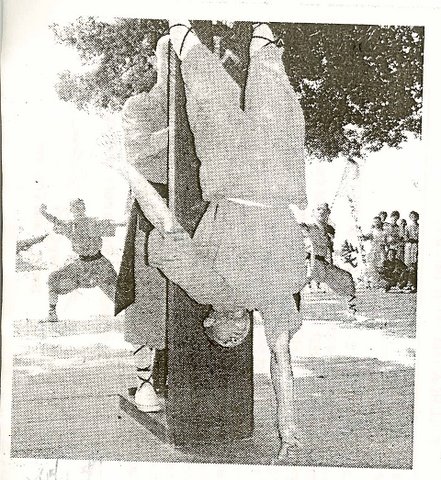
Regular Handstand
All I can say is WOW!
The demand for the Hand Balancing Mastery Course is overwhelming.
That’s entirely understandable when you see the systematic approach Prof. Orlick takes in his books and all the added bonuses you can get like the interviews and DVD’s.
For all of you who ordered your courses will be shipping out very soon. In fact some of the first orders have already gone out. For those that haven’t ordered yours yet, what are you waiting for?
I’ve received a few questions asking about the new course in relation to the others I have available. How does the Hand Balancing Mastery Course compare to The True Art and Science of Hand Balancing?
First off, what’s the same? They both talk about hand balancing from beginning skills up to very advanced. But that’s about it!
The Hand Balancing Mastery Course is much more systematic in its approach. In most cases you’ll work on one move right before the next and you can honestly come close to following the book in order as its laid out.
While there is some crossover in skills there’s also a lot of difference. The True Art and Science of Hand Balancing is almost devoid of walking on the hands. The Mastery Course has a whole book on it. The True Art and Science of Hand Balancing covers the planche in some depth which the Mastery Course doesn‘t have in the books, but its covered in both the CD’s and DVD’s.
I will give The True Art and Science of Hand Balancing extra points for having real photographs to display the skills. The Mastery Course has drawings for most of the skills which do the job well, especially since I had every single one re-drawn. And yes the drawings you see here and on that page is what you’ll find in the books.
The biggest difference is the amount of content. The Hand Balancing Mastery Course has so much more. In the books alone you’ll find at least twice as much. And that doesn’t even include the several hours of audio and video.
There’s even less crossover between other products.
The Secrets of the Handstand Quick Start DVD was born out of the ideas I learned from the Hand Balancing Mastery Course in using the lead-up stunts as Professor Orlick describes. That DVD covers just working up to the handstand and nothing beyond it. If you were just starting out I would recommend starting there and once you have some proficiency then getting the Mastery Course.
The Ultimate Guide to Handstand Pushups is more about building strength then balancing. Sure it has a chapter on doing freestanding handstand pushups (which is covered in one of the DVD’s in the Mastery Course) but that’s the only real similarity.
That should give you an idea of the differences. To get more details take the time to read the product pages. Sure, they might be a little salesy but I do my best to actually show you what’s inside each book, DVD or course.
If you have any other specific questions let me know.
Good Luck and Good Hand Balancing,
Logan Christopher

















